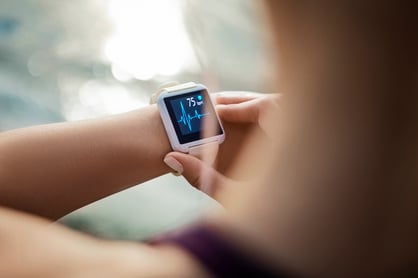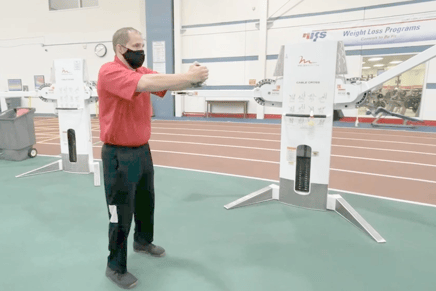 Everyone knows that routine exercise benefits your heart and overall health in the long term, but what do those benefits look like? When we start exercising, we can experience benefits almost immediately, and even after months of training, our body continues to adapt. The key is to find a routine that best fits you and stick with it—because if we stop exercising, our body can lose the adaptations it made.
Everyone knows that routine exercise benefits your heart and overall health in the long term, but what do those benefits look like? When we start exercising, we can experience benefits almost immediately, and even after months of training, our body continues to adapt. The key is to find a routine that best fits you and stick with it—because if we stop exercising, our body can lose the adaptations it made.
Understanding Your Heart Health Risks
Many people are unaware of their cardiovascular risks until symptoms arise, making prevention even more important. The American College of Sports Medicine (ACSM) outlines several risk factors that contribute to cardiovascular disease:
-
Age: Men over the age of 45; women over the age of 55.*
-
Family history: A male family member who had a heart attack or open-heart surgery before age 55, or a female family member before age 65.*
-
Smoking: Current smoking or having quit within the past 6 months.
-
Physical inactivity: Not meeting the minimum of 150-300 minutes per week of moderate-intensity exercise or 75-150 minutes per week of vigorous-intensity exercise.
-
BMI: A BMI greater than 30.
-
Blood pressure: Resting blood pressure higher than 130/80.
-
Cholesterol: LDL >130 mg/dL, HDL <40 mg/dL, or total cholesterol >200 mg/dL.
-
Blood sugar: Fasting blood sugar >100 mg/dL or A1C >5.7%.
Factors marked with an asterisk () cannot be changed.*
These measurements require additional testing done by a medical professional, such as your primary care physician (PCP).
How Exercise Benefits Heart Health
Now that you know what to look out for, let’s go through each of the changeable risk factors and see how exercise can benefit our heart health.
-
Smoking: It is well known that smoking harms your health. While exercise cannot undo the damage, it can help curb cravings, making it easier to quit. For additional help, talk to your doctor about other options.
-
Physical inactivity: Being inactive can lead to other risk factors worsening. It’s important to incorporate regular exercise and minimize long periods of sitting. The more we move, the better our overall health!
-
BMI: The fitness world often overcomplicates weight loss, but it ultimately comes down to calories in versus calories out. If you start exercising while maintaining your current caloric intake, you will likely experience weight loss over time, helping lower BMI. If you're curious about how many calories are right for you, talk to a health fitness specialist about our Resting Metabolic Rate test.
-
Blood pressure: Ideally, resting blood pressure should be under 120/70. When we exercise, our heart works harder, increasing blood pressure temporarily. After exercise, the heart rate lowers, and arteries expand, leading to an overall decrease in blood pressure over time.
-
Cholesterol: Regular exercise helps lower bad cholesterol (LDL), which can cause blockages, and increases good cholesterol (HDL), which clears LDL from the arteries. Exercise encourages your body to use cholesterol for energy rather than storing it. However, diet plays a significant role as well—meet with our registered dietitians if you have questions.
-
Blood sugar: Our body breaks down food into sugar, which is stored in muscles and the bloodstream. Exercise helps the body use excess blood sugar for energy, improving overall blood sugar levels. Like cholesterol, diet also plays a crucial role, so consulting with a registered dietitian can be beneficial.
Ready to Take the Next Step?
Research shows that engaging in at least 150-300 minutes per week of moderate-intensity exercise or 75-150 minutes per week of vigorous-intensity exercise significantly lowers cardiovascular risk factors and benefits heart health. However, exercise intensity varies from person to person depending on training status.
To ensure you’re working at the right intensity and getting the most out of your workouts, schedule a free strategy session with a health fitness specialist at the Track Desk today! Even small changes can lead to big improvements in your heart health.
Please note that exercise is NOT a replacement for prescribed medication. Always consult with your medical provider before beginning a new exercise routine.

 We all know regular exercise is great for your heart and overall health, but what does that actually mean? The truth is, the benefits of exercise can start almost immediately, and your body continues to adapt over time as you stick to your routine. The key is consistency: finding an exercise routine that works for you and maintaining it. If you stop exercising, your body can lose the adaptations it worked hard to achieve.
We all know regular exercise is great for your heart and overall health, but what does that actually mean? The truth is, the benefits of exercise can start almost immediately, and your body continues to adapt over time as you stick to your routine. The key is consistency: finding an exercise routine that works for you and maintaining it. If you stop exercising, your body can lose the adaptations it worked hard to achieve.
 Conjugate training is a term coined and expanded upon by the late, great Louie Simmons, a well-known strength coach at
Conjugate training is a term coined and expanded upon by the late, great Louie Simmons, a well-known strength coach at 
 VO2 max testing, or graded exercise testing, is a treadmill run or cycle to volitional fatigue—or pretty much going until you must stop. The test will tell us how many liters of oxygen you are able to take in and use for cellular respiration.
VO2 max testing, or graded exercise testing, is a treadmill run or cycle to volitional fatigue—or pretty much going until you must stop. The test will tell us how many liters of oxygen you are able to take in and use for cellular respiration.  While training your cardiovascular system, it is important to understand how much you are stressing and overloading the system. Just like with your musculoskeletal system, there is a maximum rate your heart can achieve. The best way to discover this number is to undergo a maximal aerobic capacity test, but it isn’t necessarily practical or safe for all populations.
While training your cardiovascular system, it is important to understand how much you are stressing and overloading the system. Just like with your musculoskeletal system, there is a maximum rate your heart can achieve. The best way to discover this number is to undergo a maximal aerobic capacity test, but it isn’t necessarily practical or safe for all populations.  We all know that core stability and strength is an important factor in exercise, athletics, and even daily living. Being able to properly brace and stiffen the core is an important skill in preventing lower-back injuries when attempting certain movement patterns that occur every day. The abdominal crunch, which people often think of as a core exercise, is actually not a movement we see in our day-to-day lives. Try and think of a time you have had to mimic the abdominal crunch under a heavy load: it simply does not occur.
We all know that core stability and strength is an important factor in exercise, athletics, and even daily living. Being able to properly brace and stiffen the core is an important skill in preventing lower-back injuries when attempting certain movement patterns that occur every day. The abdominal crunch, which people often think of as a core exercise, is actually not a movement we see in our day-to-day lives. Try and think of a time you have had to mimic the abdominal crunch under a heavy load: it simply does not occur. 